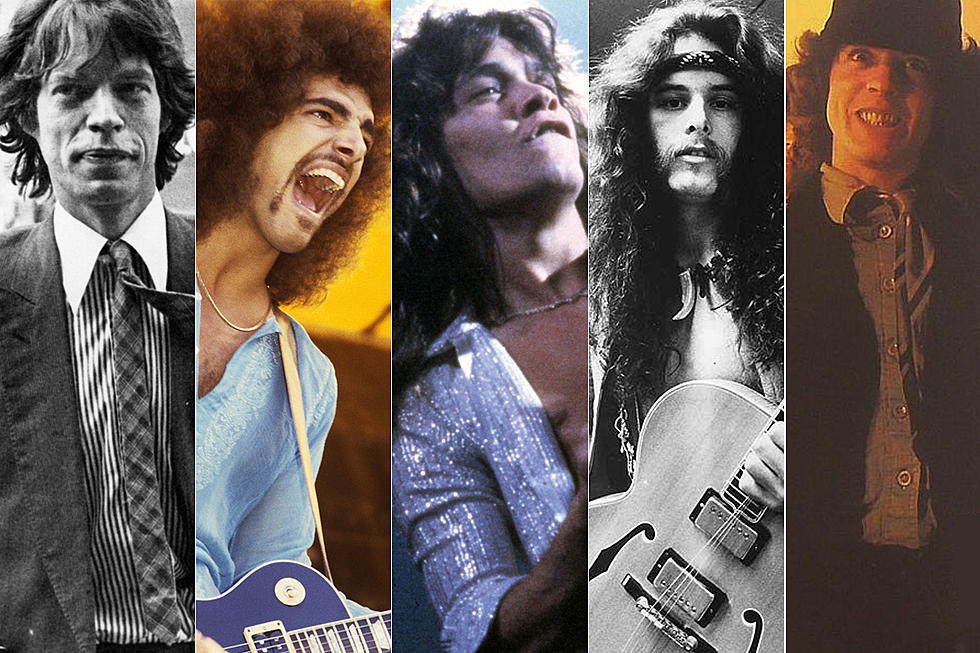30 Years Ago: Metallica Release Their Masterpiece, ‘Master of Puppets’
Heavy metal effectively came of age in the '80s, as it coalesced what had previously been a ragtag collective of bands into a bona fide rock 'n' roll subgenre capable of achieving Top 40 success.
As such, when the decade wound down, there were many candidates for “most important heavy metal album of the ‘80s”: Motley Crue’s Shout at the Devil, Guns N’ Roses’ Appetite for Destruction and Iron Maiden’s The Number of the Beast, to name but a few.
But as we look back now, with the benefit of longer historical hindsight, can there be any doubt that this description -- if it belongs to any single LP -- belongs to Metallica’s Master of Puppets? Certainly, no one would have guessed that, upon the album’s release on March 3, 1986.
Indeed, when the California quartet had begun recording their third album in the fall of 1985, at the same Sweet Silence Studios, in Copenhagen, where they’d recorded their well-received sophomore album, Ride the Lightning, they were just another “underground” heavy metal band, operating on the fringes of popular music.
Yes, by then heavy metal had already started to become mainstream thanks to more accessible and MTV-friendly bands such as Quiet Riot, Twisted Sister, Judas Priest and Maiden and Crue. But Metallica and their fellow thrash brethren (Anthrax, Slayer, etc. -- to say nothing of early extremists like Venom or Mercyful Fate) were still considered far too unpalatable to ever follow in their wake.
But Master of Puppets would change all that and, amazingly, do so without trying to ape commercial trends, never mind appease Metallica’s new major label, Elektra Records. Instead, the album simply followed the natural progression of the band’s evolutionary curve, producing a set of songs both striking and diverse that simply turned out bigger, heavier, and altogether better than their predecessors.
LP bookends "Battery" and "Damage, Inc." delivered sonically decapitating, state-of-the-art thrash devastation; epic works such as the title track, "Disposable Heroes" and ‘the instrumental "Orion" stockpiled outstanding riffs with quasi-progressive ambitions; doom-laden departures like "The Thing that Should Not Be" and "Leper Messiah" flipped the speed-metal script with crushing deliberateness; and "Welcome Home (Sanitarium)" proved that power ballads need not kowtow to more sensitive listeners, but could instead evoke suicidal depression.
From start to finish, Master of Puppets was an absolute triumph of visceral inspiration over market-pleasing common sense; and the essentially grassroots, oftentimes word-of-mouth, process by which Metallica’s legend steadily grew throughout 1986 (aided in leaps and bounds by a crucial tour opening for Ozzy Osbourne, which literally changed the lives of countless unsuspecting concertgoers) proved it.
In fact, perhaps the most revealing barometer of Metallica’s imminent breakthrough came when Master of Puppets was voted Album of the Year by the readers of Circus magazine, which reached some of the youngest and most impressionable of metal fans, ready to see the light.
Sadly, Metallica bassist Cliff Burton would not live to reap the rewards of his seminal creative contributions to ‘Master of Puppets,’ alongside band mates James Hetfield, Lars Ulrich and Kirk Hammett, as he was tragically killed just six months after the LP’s release in a horrible bus crash.
But his legacy was at least cemented, for what that’s worth, by the eventual ubiquity of the “most important heavy metal album of the ‘80s”: Master of Puppets.
30 Battering 'Master of Puppets' Facts
More From KQCL Power 96










